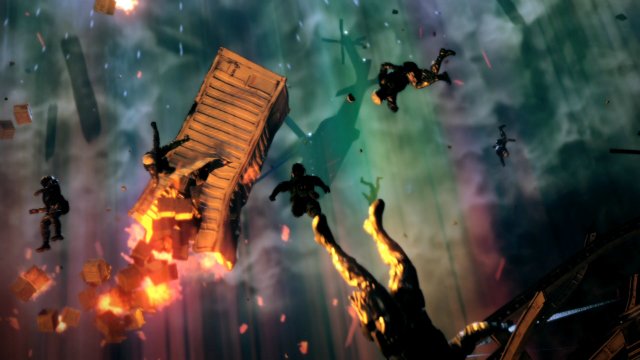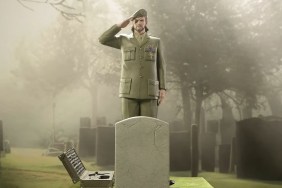I’m a huge fan of the Metal Gear series, and even though it had flaws, I adored Metal Gear Solid V: The Phantom Pain. I was astonished at how Konami dismissed Kojima, and when I heard they were crafting a new Metal Gear title without him at the helm, I was livid. It looked like Metal Gear Survive was just going to be a cheap cash-in made out of pieces of The Phantom Pain’s corpse.
I’m still not happy with Konami about the whole Kojima escapade, but I tried to put my personal feelings aside when reviewing Metal Gear Survive. The final product does reuse assets from MGSV, but after playing It, I can say that the team behind Survive put a lot of work into making this a unique experience, and succeeded in taking the series somewhere it’s never been before. However, if you were way more interested in the “Metal Gear” part of the game than the “Survive” part, then get ready for a big ol’ disappointment.
Metal Gear Survive Review: “Metal Gear?!”,”No, ‘Metal Gear.'”
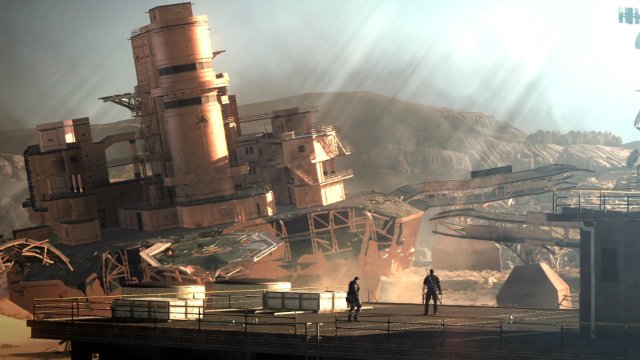
Metal Gear Survive is only tenuously connected to the Metal Gear universe. This is a side story that takes place just after Big Boss escapes from Mother Base after the XOF attack seen at the end of Metal Gear Solid V: Ground Zeroes. Right after his helicopter pulls away, a giant wormhole opens over Mother Base and sucks you and a bunch of other soldiers into another dimension.
The new dimension is called Dite, and it’s full of zombies called Wanderers and other more terrifying creatures. While there are islands of livable space, most of the area is covered with a substance known as Dust. Dust is toxic to most life, and therefore the only creatures remaining in the majority of Dite are the Wanderers.
After coming to in Dite and making your way to a new Base Camp (think Mother Base but smaller and located on land), you meet the AI Virgil AT-9 and start figuring out what exactly happened in Dite, what the Wanderers are, and how to get home.
You’ll see Metal Gear references here and there, but for the most part, this story is self-contained. Sure there’s the odd MSF patch here and there and other little callbacks, but there are not any familiar faces. Your nameless soldier, called “The Captain” by characters in-game, was just one of the random soldiers in MSF, and his backstory isn’t anywhere as rich as Big Boss or Solid Snake’s.
Metal Gear Survive Review: More “Hulking Baboon” Than “Solid Snake”
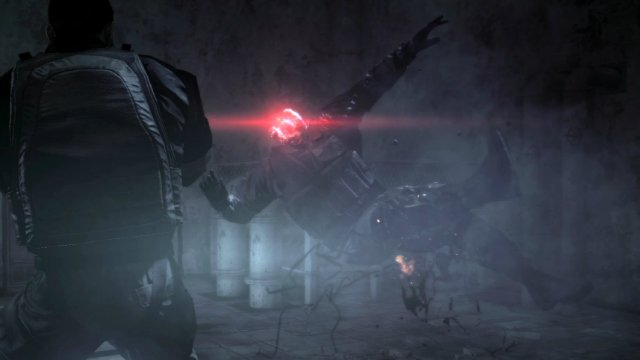
The Metal Gear tie ends up being Metal Gear Survive’s weakest link. Because of how previous Metal Gears have set the bar in cinematic quality for console games, it’s hard not to expect Survive to have a great script.
In past Metal Gear games (especially pre-Phantom Pain) the gameplay existed to drive the story forward. Sure sneaking around and taking on weird bosses was fun, but it was just a vehicle to get you to the next plot point. Survive is just the opposite. The story seems composed just to get you to Dite and into the survival elements of the game.
It’s unfortunate because the concept of the Wanderers and the alternate dimension of Dite are interesting. I won’t ruin any plot, but this take on the typical zombie genre is just different enough so that it doesn’t feel cliched. The setting and world-building are somewhat squandered by the cliched, forgettable characters and rough voice acting. Don’t expect any, “You’re a legend in the eyes of those who live on the battlefield,” moments here. The character I found most believable was Virgil the AI, so that should let you know how robotic the rest of the cast sounded.
For better or worse, the Captain is our first silent playable character in a Metal Gear game. It felt bizarre not to have the structure of an established role when playing Survive. In previous games, there was an element of role-playing in that the events that happened and the path you took were because of who Big Boss and Solid Snake were. The things you did had an impact because of how the protagonists fit into the world of the game.
Unfortunately, the poor Captain just seems to have things happen to him, and even though he does the heavy lifting, he has no agency throughout the game. Everyone else sits on their ass and complains about how bad Dite sucks while you take down hundreds of terrible creatures while always on the verge of starvation and dehydration, and when you complete an objective and get back to base, everyone just makes your decisions for you. With Metal Gear being so well known for strong protagonists and memorable characters, the Captain and his band of groupies are going to be a major turnoff for fans of the series. Castwise it just feels like the E rank soldiers from The Phantom Pain got their own spinoff game.
Metal Gear Survive Review: Surviving Survive
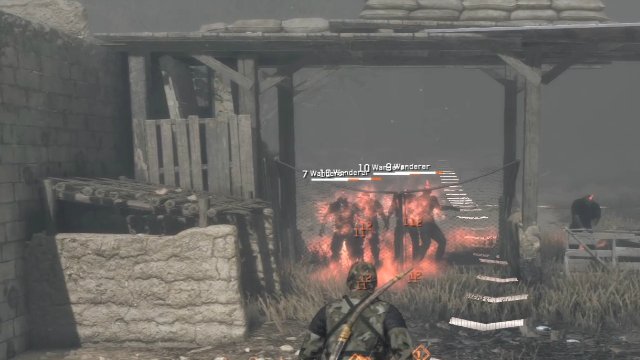
It’s a shame that Metal Gear Survive’s narrative wasn’t stronger because I really enjoyed the gameplay. In fact, they should have just called the game “Survive,” because that’s what you’ll spend the majority of the game trying to do.
The first elements of survival you’re introduced to are the thirst and hunger gauge. The Captain has a voracious appetite and a terrible thirst, so you’ve consistently got to keep filling him up with whatever you can find laying around or his stats will be affected, and eventually, he’ll die. At first, this is a huge hassle. You’ll have to drink dirty water from whatever puddle you can find it in and hope you don’t get an intestinal infection. Food is also scarce, and you’ll have to hunt the animals that remain in isolated packs throughout Dite and then cook the meat to survive. Don’t cook the meat and there’s another potential for catching an intestinal bug.
The food and drink thing flirts with being irritating, but not too far into the game you start acquiring solutions to these problems that lessen their urgency. You’ll get a recipe to boil water and make it clean to eliminate the chance of getting sick pretty early on, and later you’ll get the ability to build farms that will supply you with a steady supply of potatoes, onions, corn, and other vegetables. The further you progress, the more recipes and items you’ll find to make the struggle against thirst and hunger less of an issue, and by the time I reached the end of the campaign I never wanted for clean water or a cooked meal.
There’s also a medical system that you’ll have to use to cure ailments you’ll be inflicted with during your adventure through Dite. If you fall from too far a height, get hit by an enemy, or eat bad food (among other things) you have a chance of being injured. Injuries negatively impact your stats or movement until you take care of them. You’ll have to keep a supply of medical items on you so that you can cure yourself quickly, or you’ll find yourself at a significant disadvantage.
There’s also an O2 tank you get soon after the start of the game that lets you enter the Dust. The Dust is inhospitable to humans, so you’ll have to use a portable oxygen supply to explore it. The O2 system was a bit too much in my opinion. You already have food and hunger to worry about, and having to worry about running out of breath just adds a bit too much frustration to resource management. You can refill your air using the games in-game currency, Kuban Energy, but it quickly gets very expensive to do. Exploration is a big part of the game, and it’s how you find the materials you need to craft and recipes to give you access to new items and buildings, so to have an artificial timer on how long you can explore is somewhat irritating.
In addition to accumulating recipes and items, you’ll be searching for Kuban Energy which figures into everything you do. If you want to craft an item, it costs a little Kuban Energy. You level up by spending Kuban Energy, and if you’re going to refill your O2 canister in the field, it requires some Kuban Energy as well. Fortunately, this stuff comes from the glowing red crystals you find on Wanderers and other enemies, so each time you kill one you can harvest them for a little bit of Kuban.
All these systems and items really bring you to the focus of the game: the gear grind. Besides the campaign, the big underlying objective of Metal Gear Survive is to grind for loot. The better weapons, armor, and gadgets you have, the better you can defend against Wanderers. The better you can protect against Wanderers, the better loot you can get, and the cycle continues. The campaign itself lasts around 25-30 hours, and afterward, you can continue to do random side missions given to you by your teammates and finish exploring Dite. There are also some post-campaign boss monsters that are quite challenging, and a few new things you can do in Base Camp, including defending it against hordes of Wanderers in a wormhole digger scenario.
Metal Gear Survive Review: Co-Op: Because Every Game has to Have Multiplayer
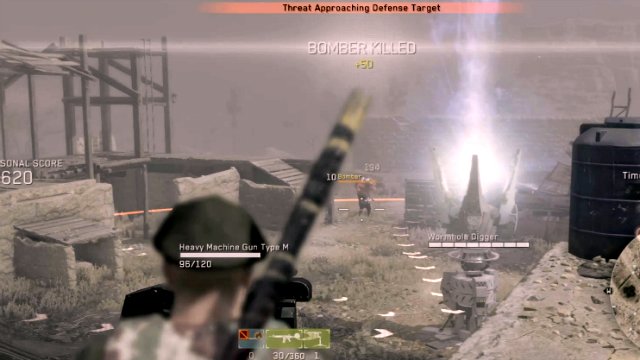
Co-op survival missions are where you’ll get the most loot, and where you’ll find your choice of equipment to matter most. In the campaign, you’ll take on digger missions which have you guarding a wormhole digger against enemy hordes for a certain amount of time. Once you built a particular scenario in-game, you can play it over-and-over again in co-op with a team of up to four players.
In co-op as the digger mines, it will fill a meter at the bottom which indicates your rank. If Wanderers attack the digger, it will stop filling the meter, so you have to construct defenses that will slow them down so that you can kill them. Achieving an S rank is the goal of this mode, and for doing so, you get a ridiculous amount of crafting items and typically at least one rare level or better blueprint.
The co-op multiplayer is an excellent complement to the single-player mode, and I liked that inventories are shared between the two. It makes the actions you take in each feel more meaningful since the impact is shared. The odd thing is though that there’s no way to interact outside of these salvage missions. There’s no co-op mode in which you can explore/attack another players base, or explore Dite together. The only co-op mode in the game at launch is the salvage missions, and although they’re fun and rewarding, they get stale quick.
In most of the games I’ve played so far, even on hard mode, everyone already knows what to do to keep the Wanderers from the digger, and it’s easy to get S rank without breaking a sweat. The lanes from which the enemy attacks are random each time you play, but with only five maps there are just so many permutations you’re gonna get.
Metal Gear Survive Review: Microtransactions: Because Every Game Has to Have Those Too
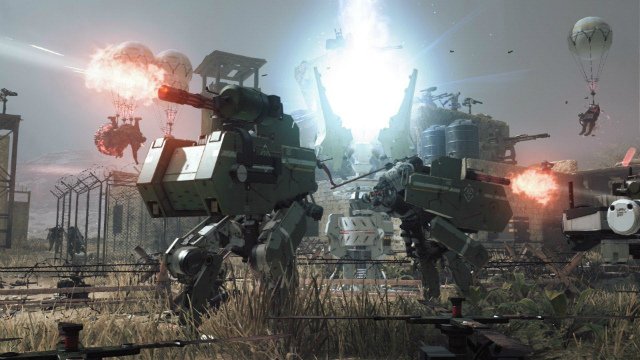
There’s a big to-do over this Metal Gear Survive “charging you $10 for another save slot.” The microtransactions in this game are annoying, but not for that reason. There’s no reason to need another save slot. You can modify your character’s appearance just like you did at the start of the game at any time. There are five different classes, four of which are earned by a post-game mission, but you can switch between them freely after you unlock them, so there’s no reason to have to play through again to reclass. Sure it’s annoying only to have one character slot, but in the scheme of things, it’s not a big deal.
The actual microtransactions people should be caring about is extra exploration team slots costing more. Late in the single-player, you get access to the exploration team, which allows you to send people you’ve rescued and brought back to base on expeditions to find items of your choosing. There are slots for four teams, but you only get the first one for free. It costs 1000 SVCoins to unlock each additional slot. The exploration team isn’t particularly useful in my opinion, but if you want to stockpile a particular item without looking for it, they’re pretty handy.
The microtransaction I actually think cheapens the game experience is the Premium Boost Pass in Metal Gear Survive. The Premium Boost Pass doubles the amount of Kuban Energy you get, doubles your Battle Points (earned in co-op events), and doubles the number of shared resources you produce. This means every single time you get Kuban Energy the amount is doubled, and each time you harvest food, water, or herbs at Base Camp, you get twice the amount of items. Honestly, this thing makes the game too easy.
I played through the first half (and arguably hardest) part of the game without the Boost Pass, and the second half with it, and leveling up and getting food and water became way too simple. It’s strange because for about $11 you can get a 30-day Boost Pass, which is infinitely more useful than an extra character or exploration team slot that cost about the same.
There are also some gestures (emotes) you can buy with microtransactions, but those are take it or leave it. I’m sure there will be more cosmetic microtransactions soon since the game mentions masks as being purchasable with SVCoins, but I didn’t spot them yet as of writing.
Metal Gear Survive Review: Surprisingly Fun
Metal Gear Survive is a perfectly fun game if you can get past the “Metal Gear” in the title. I enjoyed exploring Dite, and combatting the Wanderers was challenging and rewarding. The co-op could use some expanding, but what’s there is well done, and it positively encourages teamwork. The sloppy narrative and poor character building would be a drag in any game, but being part of an illustrious franchise, Metal Gear Survive is going to be harshly judged in comparison to its ancestors. I was able to get past it because I enjoyed the fundamental gameplay enough, but those who were solely in for the Metal Gear connection are going to be salty.
If Konami would have introduced Metal Gear Survive as an entirely new title, and marketed it better, it would likely be a Spring hit. However, slapping Metal Gear on it weirdly makes it have this generic feel. Despite the enjoyable gameplay, I always felt like something was missing, and there is. You can tell Kojima went nowhere near this Metal Gear. However, aside from the mediocre plot and acting, and the brain-dead microtransactions this game has a lot to offer, especially for $40.
-
Long campaign and plenty of weapons, gear, and, items to find.
-
Building elements are a good complement to crafting.
-
Co-op is a blast, though it can get repetitive.
-
Narrative, characters and voice acting are rough for a Metal Gear game.
-
Microtransactions are nonsensical and unnecessary.
